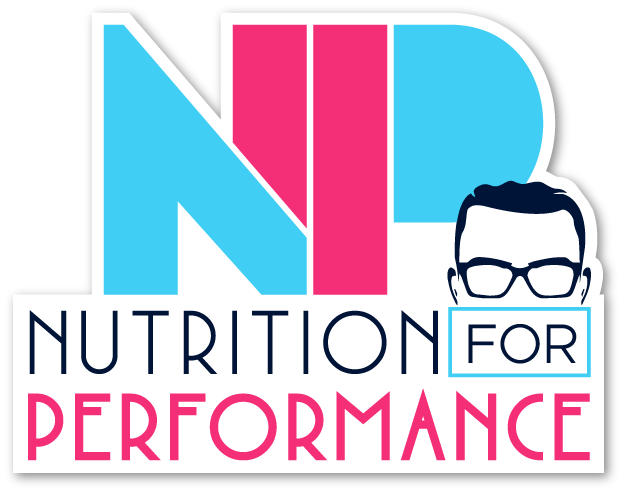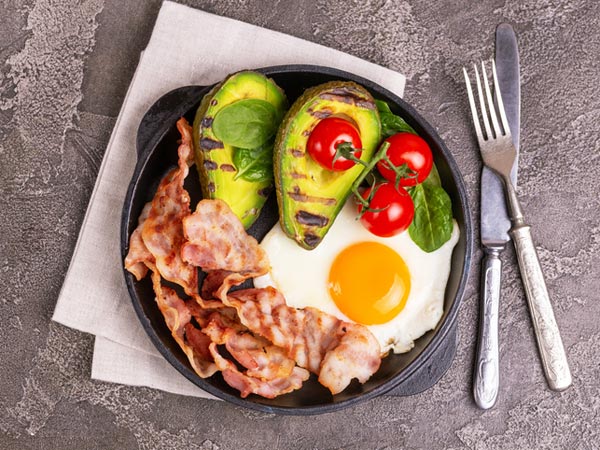We have another great week ahead AND Halloween is on Thursday! What are you all dressing up as? Me … I’m thinking about being a banana.
With Halloween, that means candy is going to be passed out. I hope you have a few pieces because I definitely will.
As you know, candy is made up of sugar, which is a carbohydrate. Most people shy away from sugar depending on what diet they’re following.
This leads us to a topic I’ve been asked about: the ketogenic (keto) diet.
What is keto?
Now, if you’ve been a Team Tony follower for a while, then you know I’m all about a balanced diet. This includes eating the foods you love and using nutrition to enhance your performance.
Before diving in, here’s something I want you all to reflect on: When you start a diet, are you thinking about what you’re doing to your body, or are you thinking about what you’re doing for your body? (Yes, there’s a difference!)
Keep that question in mind. Now, let’s bring our attention back to the keto diet. Many of you have probably heard of this diet before, but do you know exactly what it is?
Typically, we think of the carbohydrates we consume as our body’s main source of energy. And, this is true. However, the keto diet is made up of 75% fat, 20% protein, and 5% carbs. This means you focus more on using fats as energy.
Does a keto diet help with performance?
It doesn’t, at least not effectively. For starters, fat takes longer to burn than carbohydrates. Not only that, but our bodies are accustomed to using carbs as energy first. In fact, if we eat foods that are high in protein, our bodies will turn that protein into a carb-like substance for energy. Why, then, would you want to eat more fats if your body needs those carbohydrates to get you moving? It just doesn’t make sense!
The keto diet doesn’t align with the things I value and believe in when it comes to achieving your fitness goals. It’s not balanced, you’re eliminating foods instead of adding them, and it certainly doesn’t enhance your performance.
There are certain foods you can and cannot eat while on the keto diet. As we discussed in last week’s newsletter, this diet is all about using fats as energy instead of carbohydrates. So, what does that look like in terms of food?
The keto diet says to avoid root vegetables, grains, fruits, beans, and alcohol. Something about that just doesn’t seem right. Most of those food items contain vitamins and minerals, which are important to your overall health. Plus, beans have fiber in them, and I don’t know about you, but I like to keep things moving.
Foods you can have while on the keto diet include meat, fatty fish, eggs, butter, cheese, cream, and avocado. While these have a lot of protein and high fat, they lack those vitamins and minerals you need.
Keto flu
When you begin the keto diet and your body is adjusting, you may develop the keto flu. This can last for a week with symptoms ranging from muscle cramps and dizziness to vomiting and diarrhea. Something to note here is that fats push water out of your body while carbohydrates bring water in. So, those muscle cramps, along with irritability and weakness, are a result of the lack of carbs your body is getting. Those fats are also pushing out potassium and sodium.
Even if it means weight loss (which is just water, not true weight loss), the keto flu sounds like a bad time. Plus, if you get the keto flu, you shouldn’t be exercising. Doesn’t that just sound counterproductive??
Why I don’t recommend a keto diet
As you already know, I like to encourage my clients to eat all kinds of foods, not just certain ones. For this reason, the keto diet isn’t something I’d recommend.
This week I want to talk about the four different types of keto:
- Standard: This is a low-carb, high-fat diet. It equates to 5% carbs, 75% fat, and 20% protein. Sure sounds easy but 5% carbs could be as little as 20 g of carbs which is 2 slices of bread … for the whole day.
- Cyclical: The cyclical keto diet involves periods of high-carb refeeds. You have 5 keto days and 2 high-carb days. SO, you never really get into ketosis … This could actually lead to a binge restrict cycle. That’s a whole other topic, but just imagine binging and then feeling guilty. I do not want that for you.
- Targeted: When you follow the targeted keto diet, you eat carbs around your workouts. So, carbs help your performance … Are we starting to see a trend here?
- High Protein: This is similar to the standard keto diet except the level of protein is 35% and the level of fat is 60%. It’s been used to help athletes with muscle recovery. This sounds good, but again, carbs = fuel.
Looking at these four, only two have been studied – standard and high-protein. However, science says neither of them will help with your performance. When it comes to cyclical and targeted, there’s no science-based data to prove they help with your performance. Plus, both are centered around a high-carb intake, so guess what? Carbs for the win!
With carbs being a necessity to our diets, I wouldn’t typically recommend keto to clients. Remember in the first newsletter of this series how I explained that fats take longer to burn than carbs? If someone wants to perform better, that longer-lasting fuel isn’t going to give them the energy they need to help with their performance.
Eat your carbs, kids!



